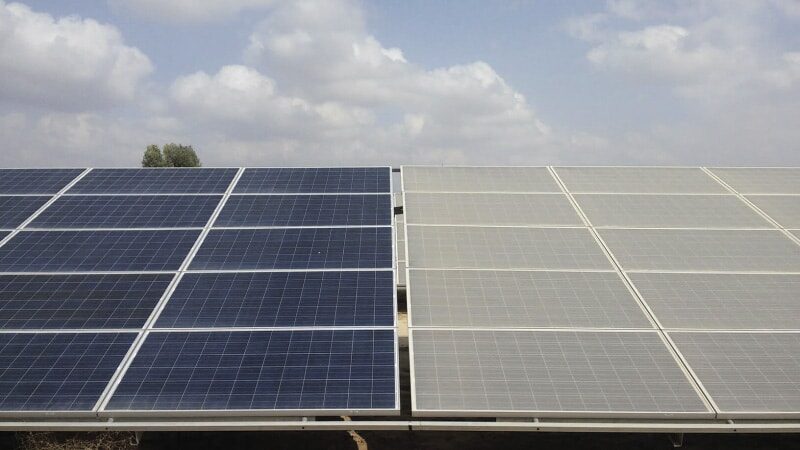Researchers from Dutch research institute AMOLF and Germany's Fraunhofer Institute for Solar Energy Systems (Fraunhofer ISE) have developed a tunnel oxide passivated contact (TOPCon) solar cell that utilizes silver nanowire (Ag NW) grids as transparent electrodes.
Due to their optoelectronic and mechanical properties, Ag NW networks are considered a valid alternative to indium tin oxide (ITO) for cell electrodes. “We strongly believe that the wires will be particularly useful in thin film-based solar cells, where light trapping is more challenging and carrier diffusion lengths are smaller,” the research's lead author, Esther Alarcon Llado, told pv magazine. “The TOPCon cell was a platform to probe the grid’s transparency. Due to the long minority carrier diffusion length of the emitter, this cell type is ideally suited as an electrically active detector.”
The research team grew the Ag NW grids on the solar cell by using two scalable and low-cost tecniques – nanoimprint lithography and room-temperature light-driven electrochemical deposition. The latter is already commonly utilized to fabricate rear electrodes for solar cells and the former is generally used in the industrial manufacturing of photonic devices and large area displays.
The scientists fabricated the device with double-side crystalline silicon wafers with thickness of 300 μm, with the thin oxide layers being grown at 600 C and deposited on both sides via low pressure chemical vapor deposition (LPCVD). They also doped the front and back sides with phosphorus (P) and boron-monofluroide (BF), respectively, and placed a silver back contact on the back side by thermal evaporation.
The researchers assessed the performance of the cell and Ag NW grids by investigating their external quantum efficiency (EQE), which is the ratio of the number of electrons collected by the solar cell to the number of photons that hit it. It defines how well a solar cell converts photons into electrical current. In traditional solar cells, the maximum EQE is 100%, representing the generation and collection of one electron for each photon absorbed from sunlight.
The analysis showed that the device's EQE is improved by the addition of the silver Ag NW grids, which the academics said is the result of the increased optical path length by the diffraction of grids themselves. This is the first time that a metallic nanostructure offers photonic gain in a solar cell, which gives promise to designing next generation optically and electrically active layers,” they explained.
“We have only compared the costs of the raw material between the wires and the ITO with similar performance,” Alarcon Llado said, referring to the production costs of the grids. “We believe that the wires can be made in a scalable fashion by using conformal lithography and electrodeposition, which are both industrially available.” She also said that the proposed Ag NW grids may also be used in the bottom cells of perovskite-silicon tandem solar cells as they can increase the optical path length.
The novel manufacturing technique was discussed in the study “Enhanced near infrared light trapping in Si solar cells with metal nanowire grid front electrodes,” published in Solar Energy Materials and Solar Cells.
This content is protected by copyright and may not be reused. If you want to cooperate with us and would like to reuse some of our content, please contact: editors@pv-magazine.com.




By submitting this form you agree to pv magazine using your data for the purposes of publishing your comment.
Your personal data will only be disclosed or otherwise transmitted to third parties for the purposes of spam filtering or if this is necessary for technical maintenance of the website. Any other transfer to third parties will not take place unless this is justified on the basis of applicable data protection regulations or if pv magazine is legally obliged to do so.
You may revoke this consent at any time with effect for the future, in which case your personal data will be deleted immediately. Otherwise, your data will be deleted if pv magazine has processed your request or the purpose of data storage is fulfilled.
Further information on data privacy can be found in our Data Protection Policy.